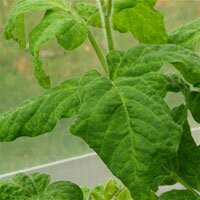
- Agronomics
-
Diseases
- Asian Rust
- Anthracnose
- Bacterial Blight
- Bacterial Pustule
- Bean Pod Mottle Virus
- Brown Stem Rot
- Cercospora Leaf Blight
- Charcoal Rot
- Downy Mildew
- Frogeye Leaf Spot
- Green Stem Syndrome
- Iron Deficiency Chlorosis
- Phytophthora Root & Stem Rot
- Powdery Mildew
- Rhizoctonia
- Seedling Diseases
- Septoria (Brown Spot)
- SCN (Soybean Cyst Nematode)
- Soybean Mosaic Virus
- Stem Canker
- Sudden Death Syndrome
- Viruses
- White Mold
- Pests
- Biological Control
- Diagnostic Tools
- About Us
- Library
| Disease: Mosaic Virus |


Your soybean checkoff.
Delivering Results.
Scouting for Soybean Mosaic Virus
 |
|
Aphids feeding on soybean leaves with symptoms of soybean mosaic virus. Photo credit: University of Illinois, Laboratory for Soybean Disease Research |
 |
| Mottled seed due to infection by SMV. Photo credit: X.B. Yang, Iowa State University |
Scout for foliar symptoms in cool weather during periods of active plant growth. SMV infection is most apparant in the youngest leaves. Keep in mind that reaction of soybeans to SMV varies with soybean variety. Infected plants of some varieties may not show any foliar symptoms.
Symptoms of virus infection are frequently associated with specific fields, especially those with moderate to high insect activity. There may be clusters of symptomatic plants or just single plants with symptoms.
Check soybean seed for discoloration at maturity.
How to distinguish a virus infection from a herbicide injury
Symptoms of herbicide injury can be similar to those of soybean mosaic virus and misdiagnosis can occur. Here are some guidelines:
- Rugosity (rough leaves), cupping, twisting and distortion of leaves are symptoms of both. These symptoms in the absence of a herbicide application may indicate a virus.
- Herbicide injury may follow a pattern, such as a spray swath, while virus infected plants appear in patches that are not consistent in size.
- Soybeans with herbicide injury outgrow the symptoms, while virus-infected plants may continue to show symptoms throughout the growing season. Note, however, that virus symptoms may be masked in hot dry weather.